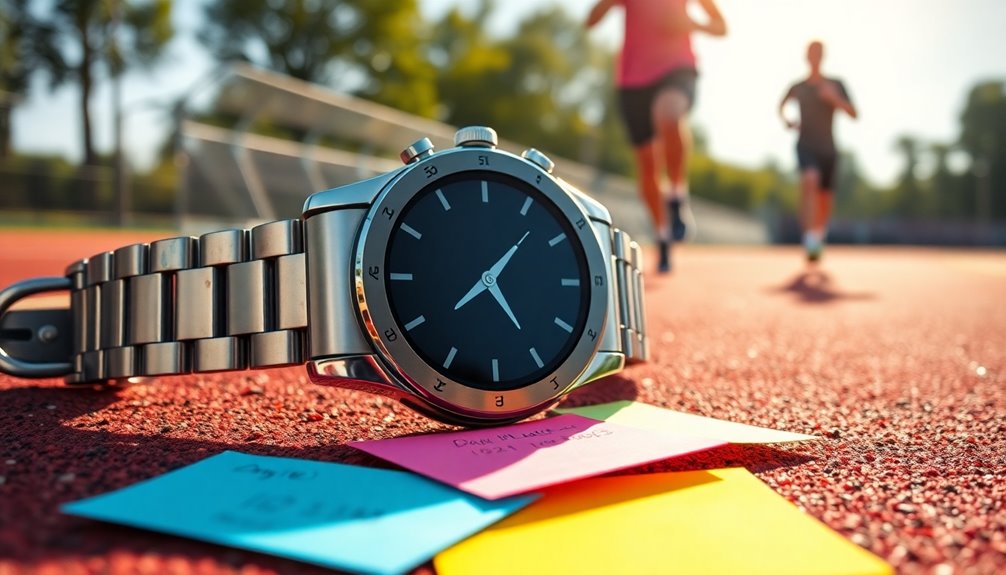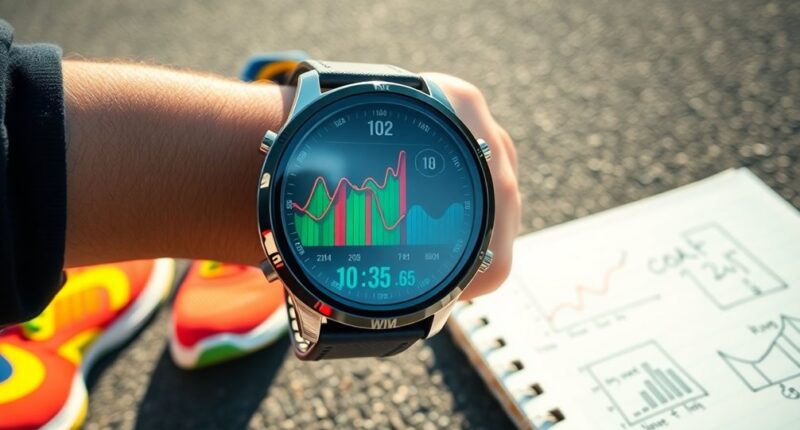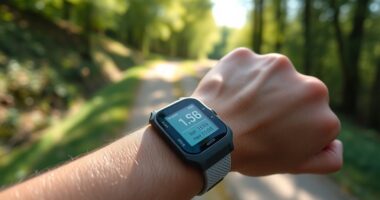If you wore your running watch upside down for 30 days, you'll be surprised by the results. Many found that this unconventional position actually improved GPS accuracy, reducing signal loss and leading to more reliable distance measurements. The right wrist may offer better performance due to design nuances, prompting runners to rethink their watch placement. Curious about how this small change could enhance your tracking? There's more to uncover about this intriguing experiment.
Key Takeaways
- Wearing the watch upside down improved GPS tracking accuracy and reduced signal loss during runs.
- Recorded distances felt more precise compared to traditional wrist placement.
- The right wrist positioning might enhance GPS performance due to design or antenna placement factors.
- Community feedback indicated similar experiences with varying wrist positions among runners.
- Experiment findings encourage further exploration of unconventional watch placements for better performance.

Have you ever wondered if your running watch's position affects its GPS accuracy? You're not alone. Many runners have shared experiences that suggest the placement of your watch can drastically influence its performance. After hearing various anecdotes about the impact of wrist positioning, I decided to wear my running watch upside down for 30 days to see if it made any difference.
From the very first run, I noticed something intriguing. Wearing the watch upside down, with the face pointing toward the inside of my wrist, seemed to enhance GPS tracking. While I can't really pinpoint the exact reason, several theories emerged during my experiment. Some users indicated that right wrist positioning yielded better GPS results compared to the left, hinting at potential design or antenna placement issues with the watch itself. This led me to think that perhaps certain orientations just work better with the technology.
As the days went by, I started documenting my runs, noting the GPS accuracy and any discrepancies. One thing became clear: wearing it upside down might go a long way in improving precision. The data indicated fewer instances of signal loss, and my recorded distances felt more accurate than before. These findings echoed a sentiment shared by the community: unconventional methods might lead to better results.
Of course, I faced a few challenges with wearing the watch upside down. It felt a bit awkward at first, and there were moments when I worried I mightn’t be able to view my stats quickly. However, as I grew accustomed to the new positioning, I found it surprisingly comfortable. My curiosity about GPS performance kept me motivated, and I encouraged fellow runners to experiment as well. As I continued wearing the watch upside down, I realized that this unconventional method could actually improve my adaptability during races. The concept of upside down training for runners intrigued me, as it pushed me to rethink my usual routines and discover alternative ways to maintain my focus. With each run, I started to appreciate not only the watch’s functionality but also the potential benefits of shaking up my training habits.
Throughout the month, I connected with others who shared their own experiences. Many had tried various wrist placements and reported similar outcomes. They suggested documenting findings through pictures of watch positioning to help build a broader understanding of GPS performance variations. This collaborative approach made me realize that the running community is genuinely interested in enhancing our experience, even if it involves simple tweaks like wearing the watch upside down.
In the end, my experiment revealed unexpected results. It's clear that wrist positioning can significantly influence GPS accuracy, and this is just the beginning. Who knows what other tweaks we might discover along the way?
Conclusion
Wearing your running watch upside down for 30 days might seem odd, but it can yield surprising insights. You'll likely discover new patterns in your data, like improved heart rate readings or altered step counts. This simple change challenges your routine and encourages you to think differently about your training. So, if you're up for an experiment, give it a try! You never know what unexpected revelations could enhance your running journey.









